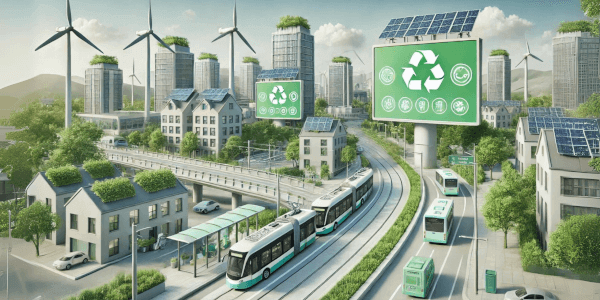Navigating the Advertising Industry's Emissions: A Guide for Brands
By Chris Hughes, head of mobile innovation and privacy, MobileFuse
Sustainability and climate impact has been taking our industry, and many others, by storm over the last year. As the world collectively wrestles with the growing climate crisis, it's apparent that self-regulation and community efforts are emerging as a beacon of hope. The collective realization that our trajectory is unsustainable has pushed emission awareness to the forefront of global discourse, with individuals, businesses, and governments embracing the need for change.
While it really is a tall order, the most important thing is to make yourself and your teams aware, and to start by keeping things simple. In reality, most people aren't even thinking about sustainability, let alone how to understand their own company's standing and how to reduce emissions.
With this in mind, here are a few thought starters brands should consider when looking to navigate their role in the advertising industry's emissions.
Paving Your Own Way
In our industry, one thing that is surprising and difficult is that there are not many companies to examine and emulate when it comes to emissions reductions. Just like anything else, it's very helpful to look at what others are doing – especially if they're where you want to be.
While there is a good amount of insights around environmental implications at the corporate level, they're pretty much all for companies with physical products and operations – think manufacturing or transportation and shipping companies. There aren't many resources that help predominantly digital-footprint companies.
That said, a great place to start reviewing your climate impact, is literally to measure your contributions.
It's All In The Numbers
Once you get a general sense of what's needed to start your emissions reduction journey, it's time to calculate your organization's emissions – from there the path to reductions looks a lot more manageable.
By assessing which emission categories your organization contributes to, you'll be able to make actionable changes for the better. Notably, emissions fall in three key categories:
- Scope 1 emissions – direct greenhouse gas (GHG) emissions that occur from sources owned or controlled by an organization. These emissions are typically the easiest to identify and quantify.
- Scope 2 emissions – indirect greenhouse gas emissions that occur from the generation of electricity, steam, heating, or cooling that is purchased or brought into the organization's location. These emissions are caused by the activities of the organization, but they occur at a source that is not owned or controlled by the organization.
- Scope 3 emissions – all other indirect greenhouse gas emissions that occur in the upstream and downstream activities of an organization's value chain. These emissions are caused by the activities of the organization, but they occur at sources that are neither owned nor controlled by the organization.
While Scope 1 and 2 emissions are usually straightforward to calculate, Scope 3 emissions are more complex. Calculating your Scope 3 emissions will require research and analysis as well as reaching out to your service providers; some examples of things that commonly fall in this category are purchases of goods and services, employee commutes, waste disposal and business travel. In our experience, you're likely to find out that your upstream and downstream partners might not have an understanding of their emissions either. In this case, you'll need to get resourceful in how to calculate them. For example, you can use the “spend-based method” as outlined in the GHG Protocol by taking the amount you spend on a product or service and multiplying it by an emissions factor, such as those provided by the EPA.
Only by assessing your organization's emissions in these categories will you be able to understand where your company is doing well, and what areas need the most improvement.
Real-world Implementations
Our goal at MobileFuse is to reach net-zero emissions. Just as described above, we're continually working understand the extent of our emissions and calculate the emissions associated with all products and services we use, the solutions we need to maintain our offerings, the impact of business travel, remote-work related emissions, and emissions stemming from ad impressions served to end users (including emissions from data centers used to deliver the ad to a screen, and emissions from the use of an end user's mobile device to view the ad).
To reduce emissions, we had to develop technical optimizations that scale servers only when needed, and reduce server-side CPU usage. Additionally, we implemented AI software that intelligently predicts when downstream partners will bid on ad opportunities. This significantly reduces unnecessary server pings going to demand-side platforms. Together, these efforts resulted in over 50% reductions in emissions associated with our server usage. It goes to show that with a little creativity, your organization can also heavily reduce your carbon impact.
Another avenue you can take is finding a way to reduce employee emissions associated with remote-work. While many companies eliminated office-related emissions by going hybrid or full-remote, it introduced new employee-based emissions from their homes. Speaking to our situation, we conducted research and found employee energy consumption was responsible for over 44% of our total emission contributions. That's a considerable amount – as such we created an Employee Green Energy Program which assists employees in moving their non-renewable home energy supply to renewable sources. The program reimburses them for any cost difference based on the move.
It's easy to get overwhelmed due to the complex nature of how climate impact is interwoven in almost every aspect of a business. The most important thing is to start the process – and look to make constant improvements. Now is the time for companies to work together in finding innovative ways of reducing their climate impact.






